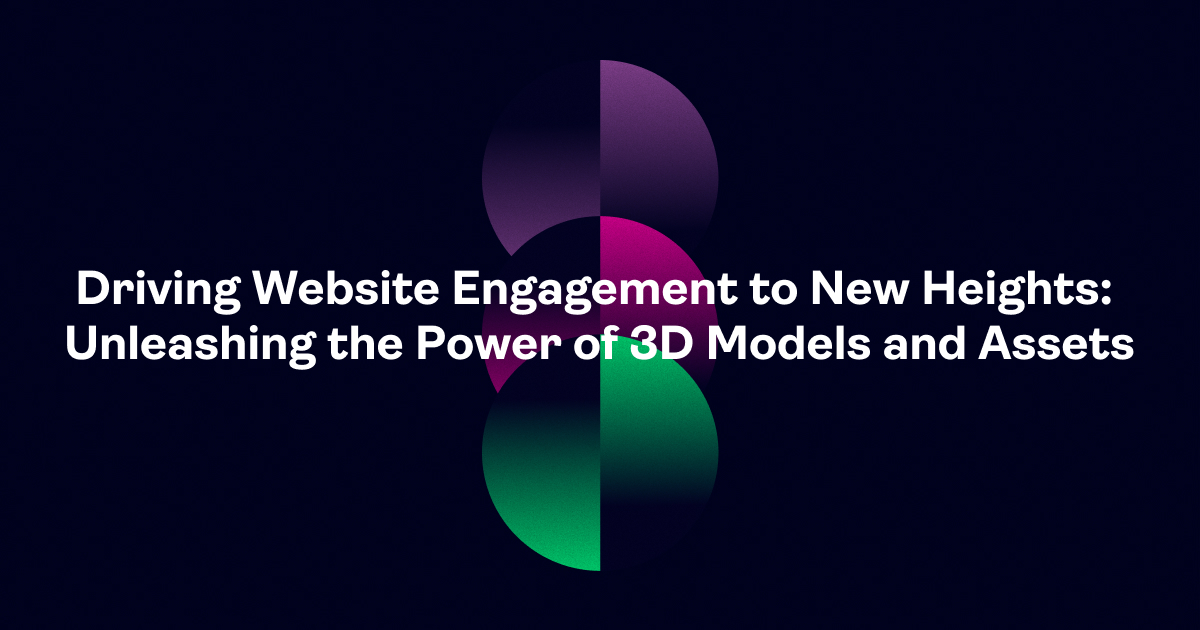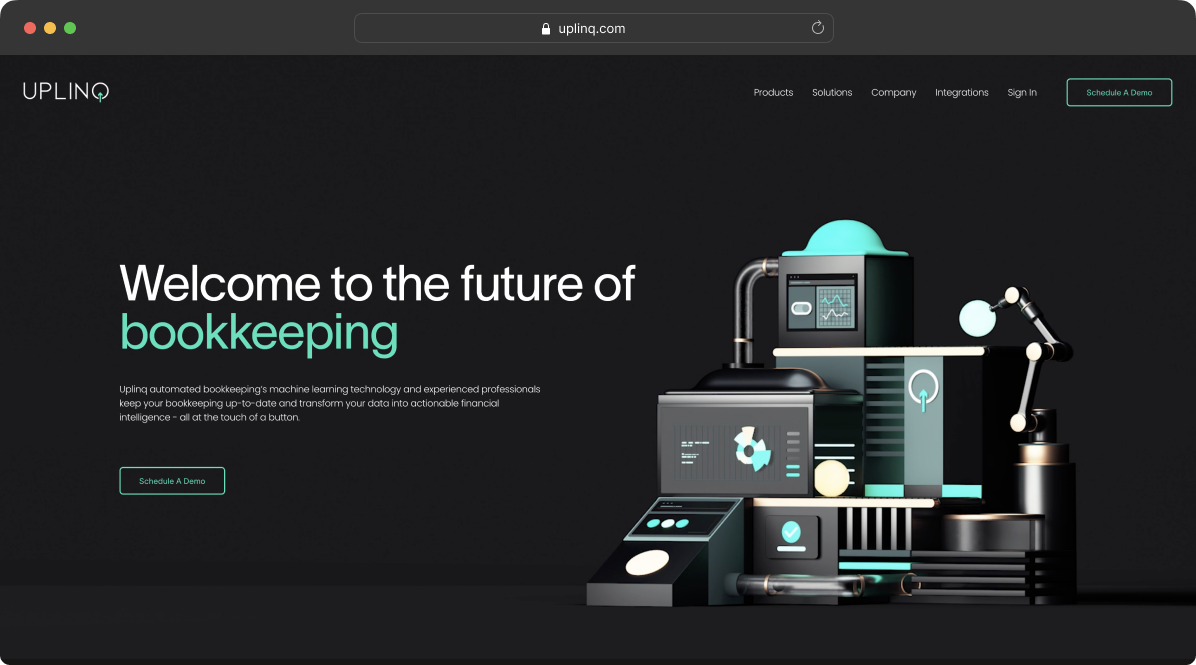
3D Modelling · 7 minute read
In today's highly competitive online landscape, engaging website content is crucial for capturing and retaining the attention of visitors. One powerful way to elevate website engagement is by incorporating 3D models and assets. These dynamic visuals offer an immersive and interactive experience that captivates users and sets your website apart from the crowd. In this comprehensive guide, we will explore how business owners can effectively use 3D models and assets on their websites to drive engagement, increase customer satisfaction, and ultimately boost conversions.
Before delving into the benefits and strategies, let's begin by understanding what 3D models and assets are. 3D models are digital representations of three-dimensional objects, characters, or environments created using specialized software. On the other hand, 3D assets refer to various components that make up a 3D model, such as textures, materials, animations, and rigging. These assets come together to create visually stunning and interactive experiences that captivate website visitors.
Enhancing Visual Appeal: 3D models and assets add a level of realism and depth to your website, instantly capturing users' attention and making a memorable impression.
Demonstrating Products or Services: Interactive 3D presentations allow visitors to explore and interact with products or services, providing a deeper understanding and boosting confidence in their potential purchase.
Building Brand Identity: Custom-made 3D models and assets can help establish a unique brand identity, differentiating your business from competitors and leaving a lasting impression on visitors.
Increasing Customer Engagement: The interactivity and immersive nature of 3D experiences keep users engaged for longer periods, reducing bounce rates and increasing the likelihood of conversions.
The next step is determining how to obtain 3D models and assets for your website. You have two options: creating them in-house or acquiring them from external sources.
In-House Creation: Creating 3D models and assets in-house provides full control over the creative process. However, it requires skilled 3D artists and specialized software, which may involve a significant investment of time and resources.
Outsourcing: If creating 3D assets in-house is not feasible, outsourcing to professional 3D artists or studios is a viable option. This allows you to leverage their expertise and experience while focusing on your core business activities.
Ready-Made Assets: Alternatively, online marketplaces and libraries offer a vast selection of ready-made 3D assets. These can be a cost-effective solution, especially for businesses with limited budgets or tight deadlines.
To ensure optimal performance and user experience, it is essential to optimize 3D models and assets for web display.
File Size and Loading Times: Optimize file sizes to reduce loading times. Techniques such as polygon reduction, texture compression, and LOD (Level of Detail) implementation can help maintain visual quality while minimizing file size.
Choosing the Right File Format: Selecting the appropriate file format is crucial for compatibility and performance. Formats like glTF and USDZ are widely supported and offer efficient web rendering.
Polycount and Textures: Balancing the level of detail in your 3D models and textures is crucial. Optimize polycount without compromising visual quality, and compress textures to reduce file size and improve loading speed.

Now, let's explore how to seamlessly integrate 3D models and assets into your website design to maximize engagement.
Embedded 3D Viewers: Use embedded 3D viewers to showcase interactive 3D models directly on your website. These viewers allow users to rotate, zoom, and explore objects from different angles, providing an engaging and informative experience.
Interactive Galleries: Create interactive image galleries or carousels that allow users to interact with 3D assets. This enables them to engage with your products or services in a more immersive and hands-on manner.
Animations and Transitions: Incorporate animated 3D elements into your website to add dynamism and capture users' attention. Transitions and animations can guide users through the site, emphasizing key features or products.
Let's explore some techniques and ideas for leveraging 3D models and assets to create engaging user experiences on your website.
Product Demonstrations: Use 3D models to showcase products or services in interactive presentations. Allow users to manipulate and explore the models, providing a virtual hands-on experience that boosts confidence and drives conversions.
Gamification Elements: Introduce gamification elements within your 3D experiences to enhance engagement. For example, incorporate interactive quizzes, challenges, or rewards that encourage users to explore and interact with your website.
Interactive Storytelling: Tell compelling stories through interactive 3D narratives. Guide users through immersive experiences that unfold as they interact with different elements, leaving a lasting impact and creating an emotional connection.
Let's examine some real-world examples of businesses that have successfully implemented 3D models and assets on their websites to drive engagement and boost conversions.
Furniture Retailers: Online furniture retailers have leveraged 3D models to allow customers to visualize how products will look in their homes. Users can place 3D furniture models in their spaces, enabling them to make informed purchase decisions.
Automotive Industry: Automotive companies have implemented 3D car configurators that allow users to customize their dream vehicles in real-time. These interactive experiences increase user engagement and generate excitement about the brand's offerings.
While incorporating 3D models and assets on your website can be highly beneficial, there are challenges to consider.
Performance Optimization: Balancing visual quality and performance is crucial. Ensure your website loads quickly, especially on mobile devices, by optimizing file sizes, employing efficient rendering techniques, and testing across different platforms.
Compatibility: Verify compatibility across various devices, browsers, and operating systems to ensure a consistent and seamless user experience.
Costs and Technical Expertise: Depending on your approach, creating or acquiring 3D assets may involve costs and require technical expertise. Assess your resources and budget to determine the best strategy for your business.
To evaluate the effectiveness of your 3D assets and optimize their impact, it's crucial to measure and analyze engagement.
Analytics Tools: Utilize web analytics tools, such as Google Analytics, to track user interactions and behaviors with your 3D models and assets. Monitor engagement time, click-through rates, and conversions to gain insights into their effectiveness.
Iterative Improvement: Use data and analytics to iterate and refine your 3D assets continually. Identify areas for improvement, test different approaches, and optimize your assets based on user feedback and behavior.
The world of 3D web experiences continues to evolve, and it's important to keep an eye on future trends and innovations.
Augmented Reality (AR): With the growing popularity of AR technology, integrating 3D models and assets into AR experiences on the web is becoming more accessible. AR allows users to overlay virtual objects in the real world, enhancing engagement and interactivity.
Web-Based 3D Rendering Engines: Advancements in web-based 3D rendering engines enable more sophisticated and realistic 3D experiences directly within web browsers. This technology eliminates the need for plugins or additional software, making 3D web experiences more accessible to users.
Incorporating 3D models and assets on your website can be a game-changer when it comes to driving engagement, increasing customer satisfaction, and boosting conversions. By leveraging the visual appeal and interactive nature of 3D, you can create immersive user experiences that captivate visitors and set your business apart from the competition. Remember to optimize your assets, choose the right implementation methods, and continually analyze engagement to ensure your 3D web experiences are effective and impactful. Embrace the power of 3D models and assets to elevate your website engagement and propel your business forward in the digital era.